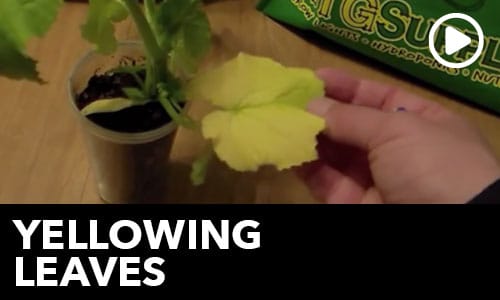By: HTG Supply Prospect Park on 08/11/2017
Welcome back folks to another Talking Shop with HTG Supply, where we dive into the hottest topics and issues facing growers today. Last week we looked at bloom boosters and when or how to properly use them.
For this week’s Talking Shop, we will be covering pests in the garden, how to identify them, methods of prevention, treatments, and recovery. In this post, I will be specifically focusing on one of the more shared pests that plagues most indoor gardeners – fungus gnats.
Fungus gnats belong to two major families, Mycetophilidae and Sciaridae, and there are over 2000 known species in existence today. Some researchers claim that there are still 2000+ species left to be discovered! When gardening indoors it’s more likely that you would see flies belonging to the Sciaridae family vs. flies belonging to the Mycetophilidae family. Fungus gnat adults are grayish black in color with long legs. Their wings can be either clear or dark depending on the species. They look like a tiny cross between a fruit fly and mosquito with the largest adults growing to be around 1/8” long. Adult fungus gnats can live up to a week laying over 300 eggs in the process. The adults can easily be seen flying around the room or “dancing” on the top soil of potted plants, especially when watering. If conditions are ideal, eggs will hatch within 4-6 days. Typically found in the top 1”-2” layer of the substrate, fungus gnat larvae are incredibly small (only a few millimeters long). These little guys can be hard to see due to their near translucent bodies. I recommend having a 30-60x loupe on hand to assist in the process of identifying any pest. The pupal stage lasts 3-5 days before the next generation of gnats are able to leave the soil and begin reproducing. Their entire life cycle lasts about 3 – 4 weeks.
Understanding the conditions that bring on an infestation are imperative. Fungus gnats absolutely love a moist environment with high humidity. Over watering heavy peat moss or compost containing substrates increases the risk of a fungus gnat infestation. Even hydro systems utilizing sterile media like rock wool are susceptible to a fungus gnat infestation due to over saturation of the substrate. Adult gnats are also attracted to chlorotic and necrotic plant matter, e.g. dead leaves or other plant debris in the garden. For the most part these docile adults are a nuisance. They are harmless in the sense that they won’t directly attack you or feed on living plants. However these adults will continue to spread the infestation by laying hundreds of eggs, and it’s really the larvae that do the damage. Sciaridae larvae will actually feed on a plants roots leaving nearly microscopic holes behind in their wake. These holes then become a breeding ground for all sorts of pathogens (ROOT ROT). In addition to wilting, loss of vigor, and overall poor growth, a dense population of fungus gnat larvae may cause chlorosis in a plant. This in turn attracts more adults – further perpetuating the infestation. Seedlings, cuttings, and younger plants are the most at risk from fungus gnat damage.

The best offense will be a strong defense – I’m talking about preventative maintenance. This means making sure your garden space is as clean as possible. Picking up fallen leaves and sweeping up debris is a must. If you are hand watering plants, be sure use trays or saucers to collect any run off. Best practices would be to remove the excess runoff from the garden as well. Using an inline pump or shop-vac works well, especially with larger hard to move plants. Be sure to avoid over watering all together, particularly substrates with high water retention. Try to take note of how heavy a saturated pot feels. There should be a noticeable difference in weight when you go to water again. Using a moisture meter can make all the difference if you are having a hard time judging this for yourself. I personally gauge my watering on what I call the finger test. Simply stick your index finger into the top 2-3” layer of substrate and feel the moisture for yourself.
Using physical barriers such Gnat Nix or Rice Hulls as a top dressing will not only help prevent pests but these products can significantly reduce their numbers. Gnat Nix is a silica based product that will act similar to diatomaceous earth in that it will cut up any soft body insect that tries to crawl through. When transplanting, it’s a great idea to leave yourself some room (about an inch) at the top of your nursery pot for any top dressing product such as these. Having the Gnat Nix below the rim will really cut back on messes down the road.
What if you are past the point of preventing an infestation? Chemical pesticides can be harsh on the plants and/or toxic towards you and your pets. Luckily there are a number of physical, biological, and natural (plant based) controls at your disposal. The first thing to do is set out yellow sticky traps, the adults are attracted to the color and get instantly stuck the moment they land on the glue. This helps control numbers and gives you a good idea of how bad the infestation really is. Make sure you are allowing your substrate to dry! Again, over watering is the main culprit when dealing with fungus gnats. This is more common when temps are cooler and transpiration rates are lower. Allowing the top inches of substrate to completely dry prevents eggs from successfully hatching and will deter females from laying new eggs.

A great biological control to consider would be predatory nematodes (Steinernematid & Heterorhabditatid species), or as I like to call them “hired bugs”. You can typically find certificates for predatory nematodes at your local HTG Supply. Once you fill out the certificate online, your nematodes arrive 2-3 days later either in a powder form or soaked sponge. Depending on the species, nematodes may require refrigeration but should always be used sooner than later. Once watered into the substrate, these microscopic worms will seek and destroy fungus gnat larvae.
Another great biological control to consider is Bacillus Thuringiensis – or BT for short. BT and an amazing bacteria that is completely harmless to plants and humans, but have a knack for killing off all sorts of destructive worms and larvae. BT has been used for some time with controlling caterpillars, but is now finding a place controlling fungus gnats, mosquitoes, and even thrips. Scientists have even developed GMO crops using BT! Pests will often consume BT assuming its food, only to be killed by it shortly after.
If the physical and biological controls just aren’t enough, try out a few products from Sierra Natural Science (SNS). They have a number of plant based and natural pesticides in systemic and “contact kill” form. SNS 203 uses a blend of clove and rosemary oils to dehydrate and kill pests with a secondary function of attacking algae and fungus. This helps cut down the source of food for the pests. SNS 203 can be used in either a foliar spray or root drench for immediate results. SNS 209, a systemic control, also uses rosemary oils and extracts, but also humic acid and saponin. SNS 209 is watered into the roots and is taken up by the plant and stored in its own tissue. Pests will then die if they consume the plant tissue containing SNS 209, others may no longer be attracted to the plant all together.
Regardless of what your weapon of choice may be, persistence is key. Treatment typically takes several weeks before an infestation is completely under control or eliminated. It’s advisable to employ multiple methods for the best and quickest results.
Now that you have the fungus gnats under control, it’s time to repair the damage done. Remember that larvae feeding on roots left behind breeding grounds for all sorts of nasty root rot causing pathogens. With bad infestations, it is almost certain that root rot has come into play. Especially if you are seeing a noticeable decline in the gnat population, but your plant is still suffering from poor growth and vigor. In this case you may need to rinse your substrate with a hydrogen peroxide (H2O2) solution to completely kill off the rot and sterilize the root zone. A 29-34% H2O2 concentrate should be used when mixing up your solution. Hydrogen peroxide from the local drug store (brown bottles) will only be 3% and simply are not strong enough. Please be careful when using concentrated H2O2 products. These are very caustic concentrates and should be handled and stored with all the proper-precautions. Always read the directions! Unfortunately, hydrogen peroxide won’t just kill the bad microbes, but all the good ones too.
After a successful sterilization and flushing of the root zone, it is time to re-inoculate the substrate to get the roots active and happy. I like to use Stump Tea not only for the beneficial microbes but for all the extra nutrients and food it supplies to the rhizosphere. I will typically couple Stump Tea with some sort of light nutrient. Boomerang, the “come back formula” from FoxFarm is a good option here because of its wide variety of included macro and micro nutrients. With-in a week you should be able to resume with your regular feeding, and hopefully back on track to a heavy and healthy harvest.
Thanks for reading this week’s Talking Shop with HTG Supply. I hope you were able to learn something today, and if not, thanks for reading anyways! If you enjoyed our post, please like and share the post with your friends. Be sure to check out the other 15 HTG locations great Talking Shop posts on Facebook and share them with your friends. Be safe, good luck, and good growing!


